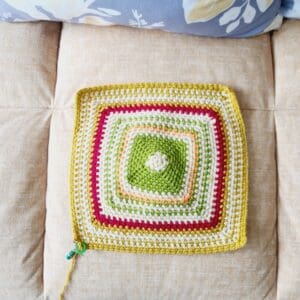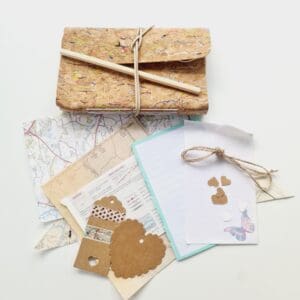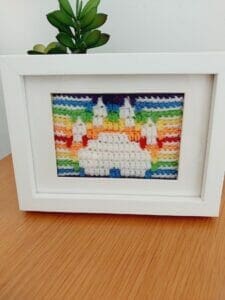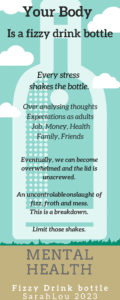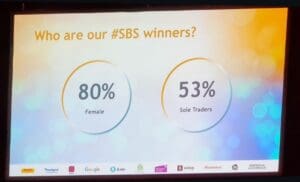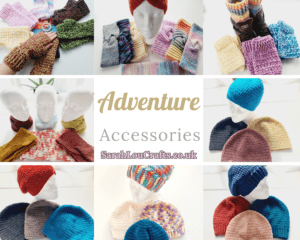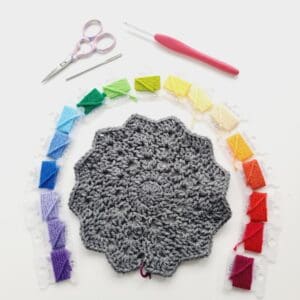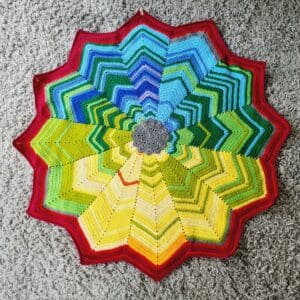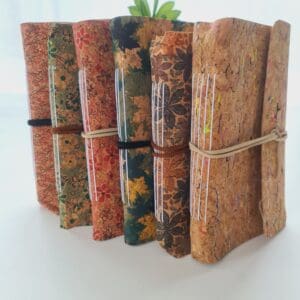Mental Health and Depression
In this post I am going to talk about how crafting has helped me manage my depression but before I get into the crafting part, I want to give some background and why advocating for mental health is so important to me.
Fizzy Pop Metaphor
Think of yourself as a fizzy bottle of pop. All day we have stresses that build up inside us. For each of these stresses shake that bottle (your body) a little bit. Thoughts we can’t filter and over analyse. Expectations on us as adults. People asking us to do things, at work, at home – SHAKE the bottle a little bit more. Our internal to do lists. Emotions, and physical feelings – SHAKE that bottle a little bit more. Generally we can all manage these shakes and settle ourselves again between each shake. Sometimes however the rests between shakes don’t happen or are not long enough to settle that bottle. Someone may ask you to do something or say something that is the equivalent of unscrewing that lid just a little way.
What happens if you unscrew the lid of a shaken carbonated liquid? A jet of fizz explodes out the sides. We might shout or swear or act a little unlike ourselves for a moment, but again in many instances we can recognise matters are becoming unmanageable and we are able to get that lid quickly tightened to stop the fizz. What happens though if we do not recognise the situation escalating? What happens if we are overwhelmed by the stress in our lives which effectively unscrews and removes the lid of the shaken bottle? You know what happens, an uncontrollable onslaught of fizz, froth and mess; that is a meltdown.
The Day I Walked Away…
I am going to now open up about my own meltdown that occurred in 2017, as I feel it is important to recognise when things don’t work out and by clearing up the resulting mess we can learn to manage ourselves differently in the future. I recommend wherever possible, you get help with clearing up the mess. Either from trained professionals, or family and friends. This is going to get really personal. I hope that you stay with me.
It was a Tuesday, I would like to say an ordinary Tuesday, but then we can have a whole discussion on what is ordinary. Was it ordinary that I was living at University Hospital of Wales while my autistic youngest teen underwent his 5th cycle of chemotherapy. For the last two years (the time that Ryan has been seriously ill) I have had many shakes to my bottle. For the last 15 years I had received many more shakes of that bottle as I also advocated for his autism. That Tuesday was ordinary so far as our lives currently were. Chemotherapy cycles had become a routine. Fighting for Ryan’s life was routine after Sepsis and Peritonitis alongside the Cancer. Being a split family and living away from home were now part of our family dynamics as we managed as best we can with the current situation.
That Tuesday morning, several shakes of that bottle occurred in quick succession. I recognised this and in order to let that bottle settle, I, at first, just needed a timeout. I went for a walk. I have always walked and hiked. All my life it has been a pastime and relaxation hobby.
The difference that day was that once I started walking the further I got away from the hospital, from the situation, from my life, the harder it became to turn around and go back. I didn’t want to go back. I didn’t want to face it anymore. I felt that Ryan’s Autism and Cancer were somehow my fault. Something I had done wrong while pregnant. If I went away, then Ryan’s illness would also go away.
I didn’t want to deal and manage and cope anymore. I wanted Ryan’s suffering to be over and if I wasn’t there then the curse I had placed on him would disappear. The longer I walked and was away the more I became scared of how angry and judgmental everyone was going to be. It was easier to not go back. I switched my phone off and I walked. I genuinely thought at the time that things would simply be able to get better if I was not part of the problem.
Having Support.
As the evening drew on I began to realise the practicalities of my current predicament. I had no coat, no belongings, I did have my purse and phone, but could not face talking to anyone, as I felt that everyone would be angry with me. I had caused more problems. I needed someone who was not part of the situation, someone who would not judge me. I needed someone to help me start to clear up that exploded mess.
Fortunately I had someone. A friend that did not judge me. A friend that was able to cope with shaking her own bottle a little in order to help me. A friend that got me back to that hospital the next day. Once there the professionals arrived to also help with clearing up the effects of my exploded bottle. My bottle (body) had shaken and exploded so impressively, that it was in fact empty. Completely done, nothing left. I had a breakdown. Now I am going to switch analogies to a car to help explain the after effects of a breakdown. This is how I was able to describe myself with help from the therapist the days and weeks of therapy that followed.
Humans put a lot of effort into managing our lives and there are three categories we generally find ourselves in to guide us safely through our lives.
We can be in drive mode. We are focused, know our route, what we plan to achieve, we are actively heading for that chosen destination.
We could be in parked mode. Not heading for any particular destination, just happy to sit and enjoy the view. Content with our current point on the map.
Or we could be in sports mode. We are anxious, we need to be somewhere urgently, or perceive a threat of needing to get away from somewhere quickly. We gun that accelerator without due care and attention, with no concern for fuel economy or wear and tear on the vehicle (our body).
Compassion Focused Therapy.
Think of our body now as a car engine. It needs to be serviced, kept finely tuned. It needs fuel to run and security features to keep it safe. Imagine what happens to your car if you allow the fuel to run low. If you run on fumes, the engine starts to shudder, the car doesn’t work as efficiently as it could and should. That is the same for your body. If you allow that engine to run completely empty the car will cease to run and will come to a juddering halt. If you are lucky you can refuel and be on your way, but you run the risk of seriously damaging the engine. It could seize. Simply refilling the tank will no longer make the car run. The engine is now damaged and needs some repair work. The same goes for your body. Simply stopping to recharge is no longer going to be enough. Your body now needs to be repaired as well.
Everyone kept telling me to care for myself, make time for me, that I was running on fumes. I know this but what if you are on a long country back road with no service stations or fuel stops. What if you couldn’t afford to refill the tank? I took a chance to get to the next stop, but I did not make it. The day of my breakdown, the day I walked away, resulted in me being forced to be towed (professional help) to a garage (therapy) to allow the repair (healing) process to begin. I thought I had to be strong for everyone else. I am the matriarch of the family. Strong people don’t ask for help. How wrong I was.
Thankfully I have received valuable help from the professionals. The car is functioning once again, but perhaps not quite as smoothly as it once was. The car isn’t quite the same as the one I had before. I have re-positioned that proverbial happy face mask that had slipped a bit from my outward persona that I allowed the world to see. The car looks clean and shiny, just don’t look under the hood/bonnet.
It is okay to take time out.
The day that I walked away, I needed a full escape. Everyone and everything had become too overwhelming. I didn’t care about anyone or anything that day, not even myself. Find a way to help your own mental health, before you reach crisis / meltdown mode. Whether it is your crafts, music, hiking, painting, or something else. Take 5 and do something for you.
Crafting for Mental Health
There has been a lot of press in recent months about the benefits of crafting for mental health. I know that my crafts hobby has been invaluable in helping me cope and manage my depression. It has given me such a boost that I am now officially self-employed and running my own handmade crafts business from home.
Lose yourself from the world for a while.
I am from a creative family of artists and craft makers meaning crafts have always been a part of my life. Learning to sew, knit and crochet from a young age and taking up cross-stitch in my teens and early twenties.
I took a break from crafting while I completed my university degree and when my youngest son was diagnosed with rare and aggressive lymphoma cancer.
Through my counselling treatment and medication for my depression, I took up my crafts again as part of my therapy and am fortunate that I had my creative outlet when Ryan relapsed in September 2017. When you craft you have to concentrate on the process which means you can lose yourself from the world for a while.
I can lose myself in my crochet. Shut everything else off. I also love that because it is a mobile craft, I can take it with me everywhere I go, so it is also now like having a comforter with me. Knowing I have it with me at the many hospital visits and appointments, even if I don’t actually do any it is there near to me.
The dark days of depression.
When battling depression there are days when you cannot face opening the blinds let alone venturing outside.
Being able to recognise these black days and allow yourself the time you need to heal. Crafts can definitely help boost you on the black days.
Does crafting alone at home make the isolation worse?
Sometimes it is perfectly okay to be content with your own company. I definitely prefer my own space, but it can also be important to not shut yourself off for long periods.
Try to get out a few times a week. Pop to the shops, or meet a friend for a coffee. Attend a weekly group. I have been making myself go to a knit and natter group at my friend’s wool shop. I don’t go every week, but I have enjoyed getting out on the days I can cope.
Proven health benefits.
I recommend getting yourself into a good routine of tackling a couple of housework jobs first thing, so that you then I can craft, without worrying about what needs doing.
Crafting has proven to reduce stress and anxiety as well as increasing brain function. There is some discussion that the cost of crafting can cause anxiety, or when projects go wrong, but emotional, mental, and tangible benefits far outweigh the negatives.
Crafting has helped me and my mental health so positively that I have decided to build my own small business allowing me to work from home and still be able to provide the ongoing care needed to Ryan.
Mental Health is definitely a rollercoaster.
The first time I went to knit and natter I walked past the shop twice, plucking up the courage to go in. You do what you need to. Self-care is paramount. If you need help, advice or just to vent, please do reach out to family, friends or online forums and groups.
Get Creative
- My first craft… Cat Picture
- Cross Stitch Embroidery
- My favourite thing to make are my handcrafted Notebook Journals.
- I taught myself to crochet in 2013 with the help of Bella Coco Crochet on YouTube.
Other ways you can be creative is to play and learn music. Especially now with YouTube being a fantastic media for online lessons. One of the best things I have done for my mental health was to join my local community town band with my clarinet. I was so nervous about joining and questioned my ability as a musician but it is so much fun to play with other like-minded amateur enthusiasts.
If you don’t fancy music, what about photography? Again there is so much information available from YouTube and Pinterest to start you off and a basic small digital camera is not expensive with plenty of second-hand options available too.
Crochet or Cross Stitch embroidery are easy and relatively inexpensive hobbies to start. With Crochet, you only need a hook and a ball of yarn to begin.
For beginners, a hook size 4mm or 5mm and a 100g ball of Double Knit yarn will be enough for you to start learning some simple granny square designs and again there are lots of helpful YouTube tutorials to help get you started. MooglyBlog offers lots of free patterns and Bella Coco Crochet has wonderfully easy to follow video tutorials on her YouTube channel.
You can buy easy beginner Cross Stitch kits from places like Hobby Craft and eBay. The kits come with everything you need to start and usually include instructions but again you can follow along to YouTube lessons as needed.
Mend and Make was my family motto growing up. My mother was an avid knitter and seamstress. She made all our clothes, curtains, and bedding, from recycled and repurposed fabrics. We did not have ‘Fast Fashion’, like the cheap disposable wasteful garments such as the Primark craze for example.
Do you know where your clothing comes from? Are you conscious of the working conditions and ethical manufacturing process of your clothes? I much prefer to buy second hand and make your own.
My father was a keen DIYer and had a stash of materials and tools to fix pretty much anything that needed doing. Both my parents were and are excellent gardeners and we grew all our own fruit and vegetables.
Hopefully, there is something here from these ideas that can help you with boosting your own mental health and piquing your crafting interests, possibly the start of a whole new hobby and way of life.
Join the discussion. What do you think of my analogies of pop bottles and car engines? Do they help to explain the complexities of mental health? Do you have a better analogy? Connect and tag me on Instagram & Threads @SarahLouCrafts.

You can read all my other posts at https://buyindie.co.uk/store/sarahloucrafts/blogs/
You can also sign up to my SLC Club newsletter where you will get a special 15% off discount code that doesn’t expire plus exclusive access to pre-launches, behind the scenes news and special offers. Sign up here. subscribepage.io/QffPBo
Free from AI. This post and all posts on the Sarah Lou Crafts blog are written by me from my own rambling thoughts and are typed by hand. Thank you for reading.
